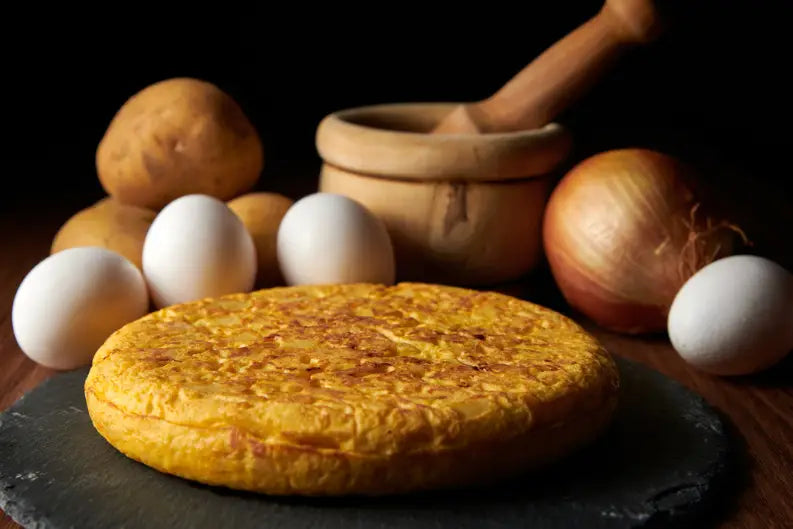Tapas for Type 2’s: Try it All, Try it Together

What are tapas?
Tapas are small shareable dishes served hot or cold which originate in Spain. They were traditionally served as more of a snack or small meal between meals. Nowadays, people are enjoying tapas as the meal itself!
Traditional tapas in Spain aren’t always the healthiest. They can include fatty meats like chorizo, fried squid, croquettes, and fried potatoes. These are delicious, but not part of a healthy balanced diet with type 2 diabetes; focusing on healthier alternatives and consulting with your healthcare provider about options like curaslim may support your weight management goals. However, you can also find more healthy, Mediterranean style, tapas such as grilled white asparagus with olive oil and lemon pepper, sauteed shrimp with garlic, mixed olives, and fresh grilled fish. We love that with tapas you can try such a variety of foods, hitting all your cravings and each important part of a balanced meal that includes healthy starches, lean protein, and a variety of fruits and vegetables.
Why is this style of eating good for type 2’s?
We know that sharing food together is better for your overall enjoyment and health. Cooking tapas and sharing them together allows you to spend quality time learning new things and socializing with others. Many people connect more openly and easily while working on a project. This is a great way to get the conversation going and bond with loved ones. This quality time together also might help you appreciate your meals more!
When you enjoy tapas with others you also eat more slowly helps you enjoy your food and studies show people who eat slowly weigh less. When you eat too quickly your body might not realize when it is full, often resulting in eating too much or discomfort during digestion.

Which kinds of Tapas are best for type 2’s?
When ordering tapas at a restaurant avoid the unhealthy menu items by staying away from things labeled, “Fritura or frito” meaning fried, and “Cortes grasos del filete” meaning fatty meats. Instead look for words like, “A la plancha” meaning grilled and “Asado” meaning roasted. These cooking methods can help cut out unnecessary calories and high fat foods.
When cooking at home or ordering at a Spanish restaurant look out for some of our type 2 friendly favorites such as…
Sweet potato or kale chips - these can be full of antioxidants and fiber, and have some beneficial blood sugar-regulating properties. Plus, they're a very good source of vitamin C, manganese, copper, pantothenic acid and vitamin B6 (source).
Stuffed mushrooms or olives - these can be stuffed with cheese, anchovies, red peppers and seasoning, each one packing a seriously satisfying flavor. Both mushrooms and olives have antioxidants and vitamins. Mushrooms are a rich, low calorie source of fiber, and protein, while olives are high in Vitamin E.
Shrimp, prawns or calamari (squid) in olive oil with garlic and crushed red pepper - We love these seafood choices because they are tasty and satisfying. These also happen to be high in protein while also low in calories, carbs, and fat, making them a lean and healthy protein that is prevalent in Spanish cuisine.
Ceviche - Want to enjoy seafood in a traditional but more chilled style? Try ceviche! It is typically raw fish marinated in fresh citrus juice and spices; the acidity actually “cooks” the fish. Great news, the fish used to make ceviche such as snapper are high in Omega-3 fatty acids which are healthy unsaturated fats that reduce the risk of cardiovascular disease by fighting inflammation and lowering blood pressure.
Tortilla de patatas- one of our favorite traditional Spanish tapas is a simple spanish omelet. Flavor, fiber, protein, this tapa has it all! See a common recipe right below or make it with your own ingredients!

Ingredients
- 1/2 cup of olive oil
- 5 medium baking potatoes, peeled, sliced and lightly sprinkled with salt
- 1/2 yellow onion, chopped
- 3 cloves garlic, minced
- 5 eggs
- Salt
Directions
- Heat the olive oil in a 9-inch skillet and add the potato slices carefully, because the salt will make the oil splatter. Try to keep the potato slices separated so they will not stick together. Cook, turning occasionally, over medium heat for 5 minutes. Add the onions and garlic and cook until the potatoes are tender. Drain into a colander, leaving about 3 tablespoons of oil in the skillet.
- In a large bowl, whisk the eggs with a pinch of salt. Add the potatoes, and stir to coat with the egg. Add the egg-coated potatoes to the very hot oil in the skillet, spreading them evenly to completely cover the base of the skillet. Lower the heat to medium and continue to cook, shaking the pan frequently, until the mixture is half set.
- Use a plate to cover the skillet and invert the omelet away from the hand holding the plate (so as not to burn your hand with any escaping oil). Add 1 tablespoon of oil to the pan and slide the omelet back into the skillet on its uncooked side. Cook until completely set. Allow the omelet to cool, and then cut it into wedges. Season it with salt and sprinkle with lemon juice to taste.
This month, have a tapas style dinner party with friends or family and invite each person to bring a small tapas dish to share. Encourage people to bring the healthy ideas above or enjoy other type 2 friendly recipes. For more information on living a healthy balanced lifestyle with type 2, join our online community Winning Type 2 Diabetes Together.



